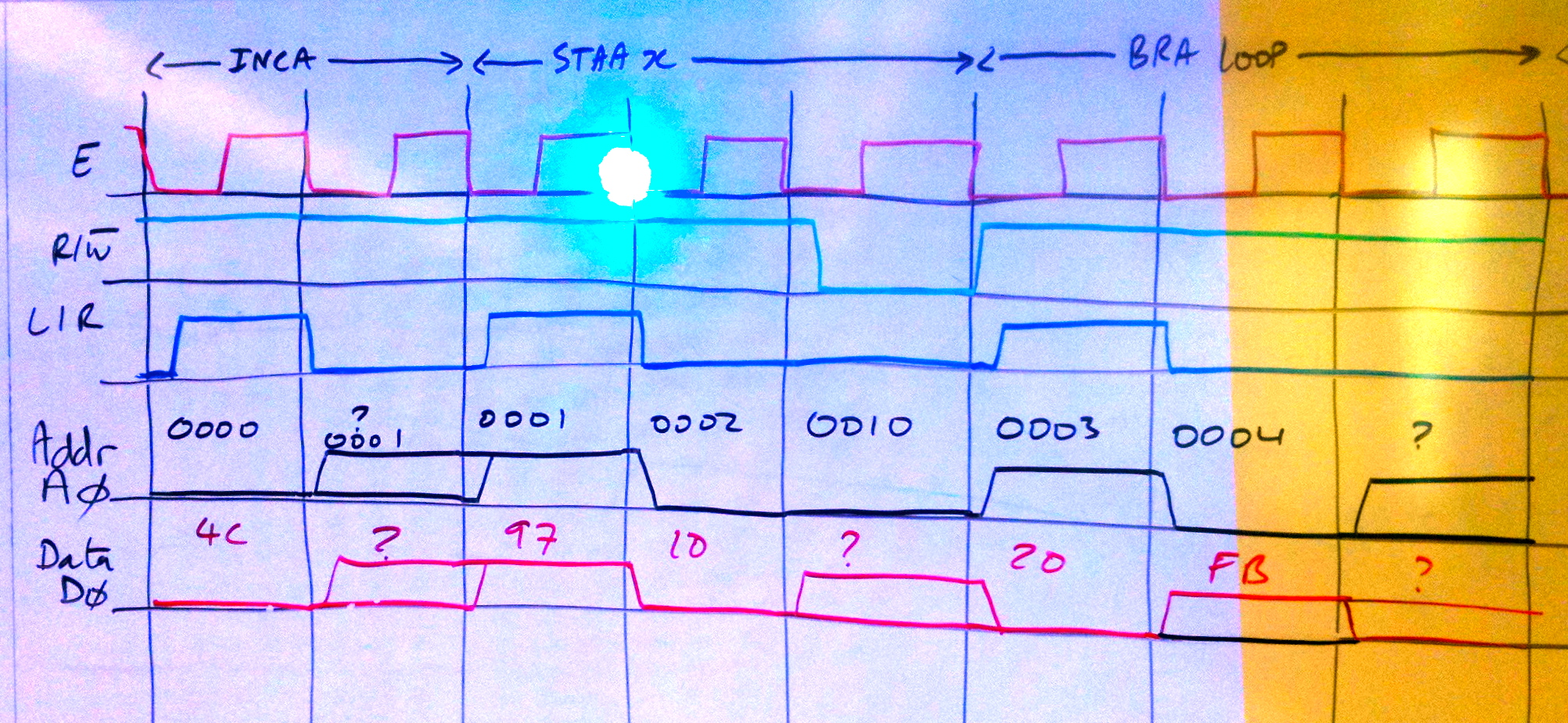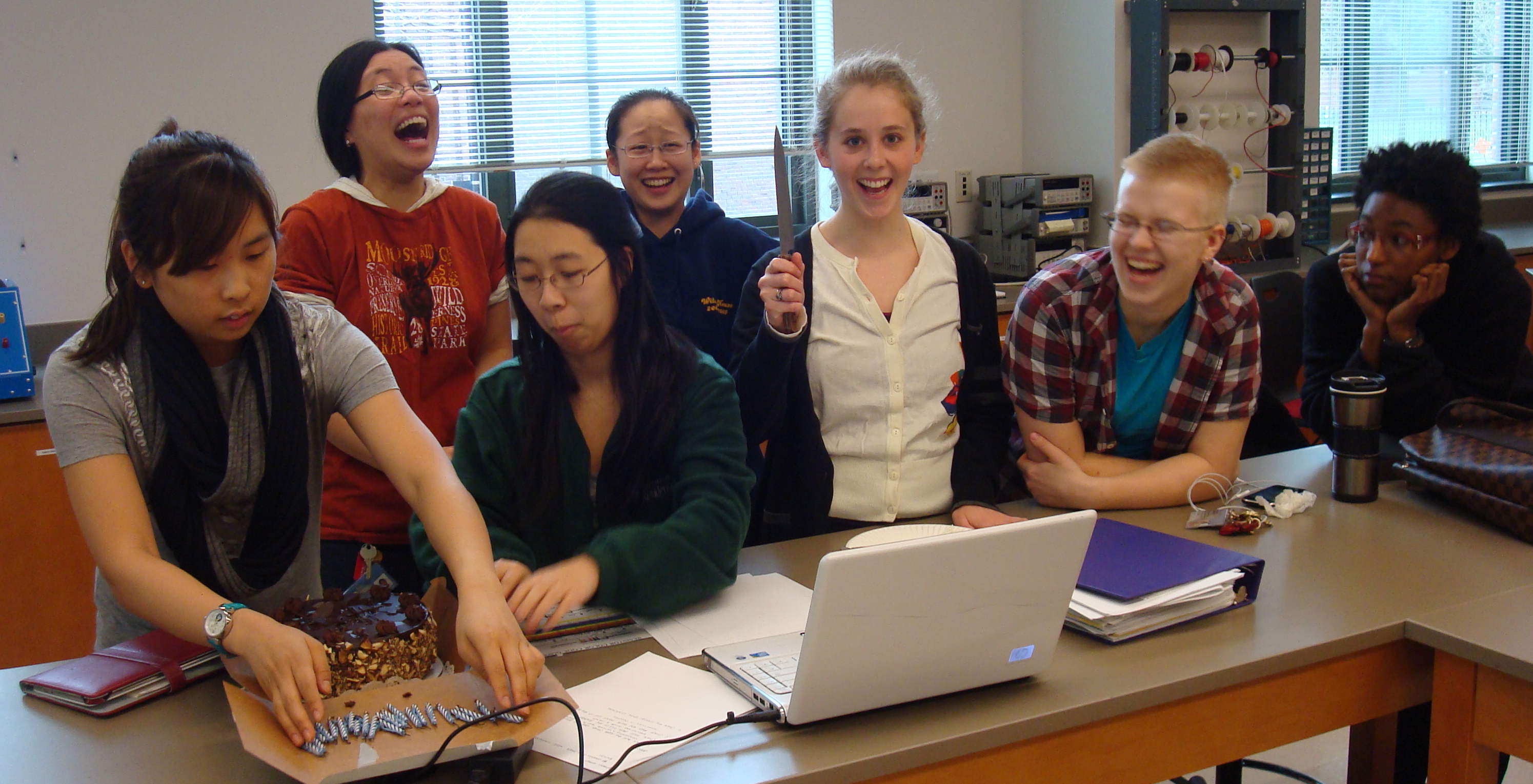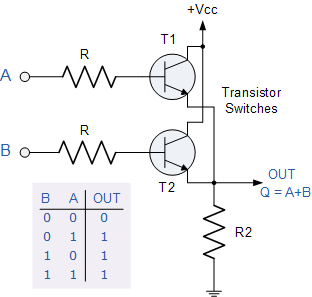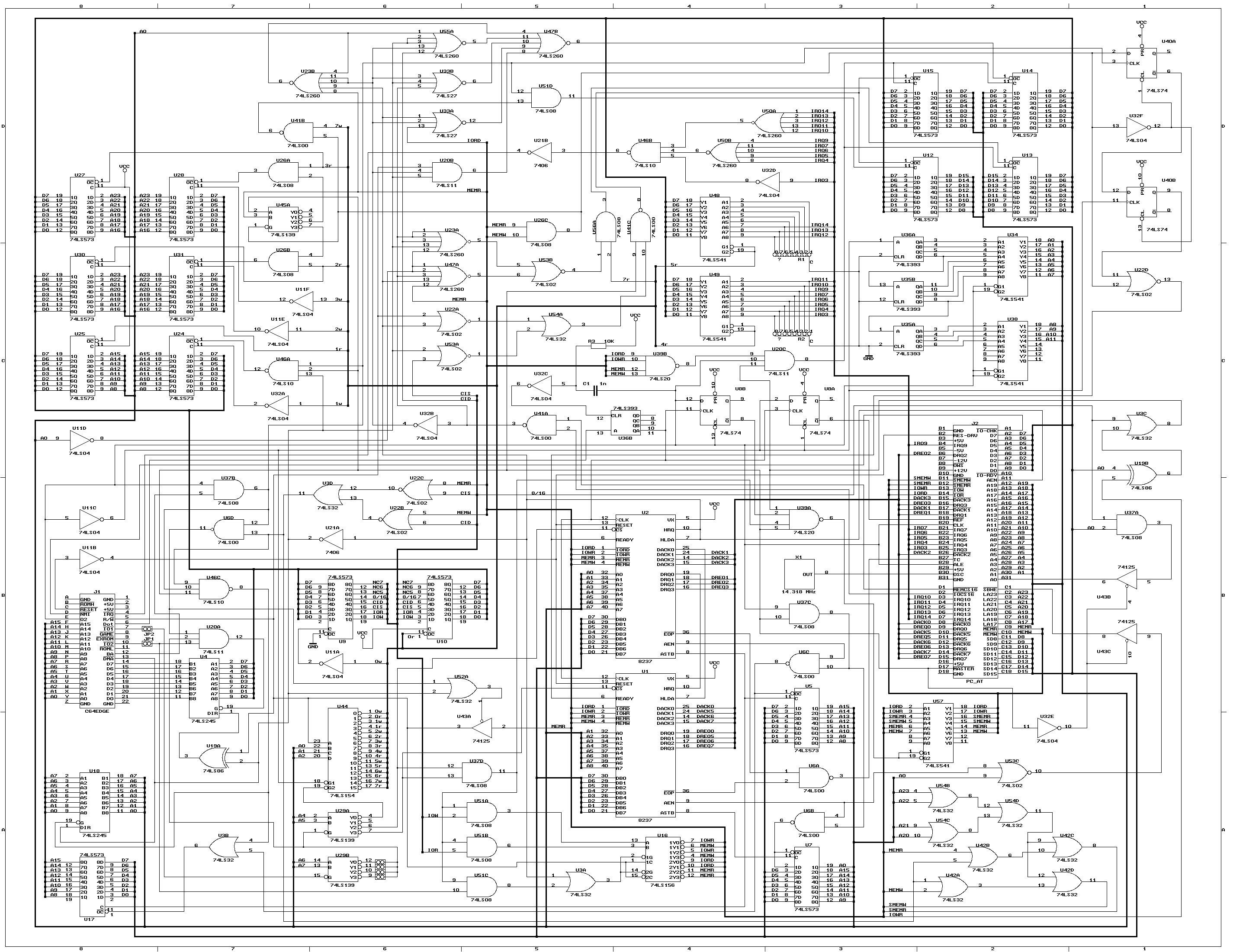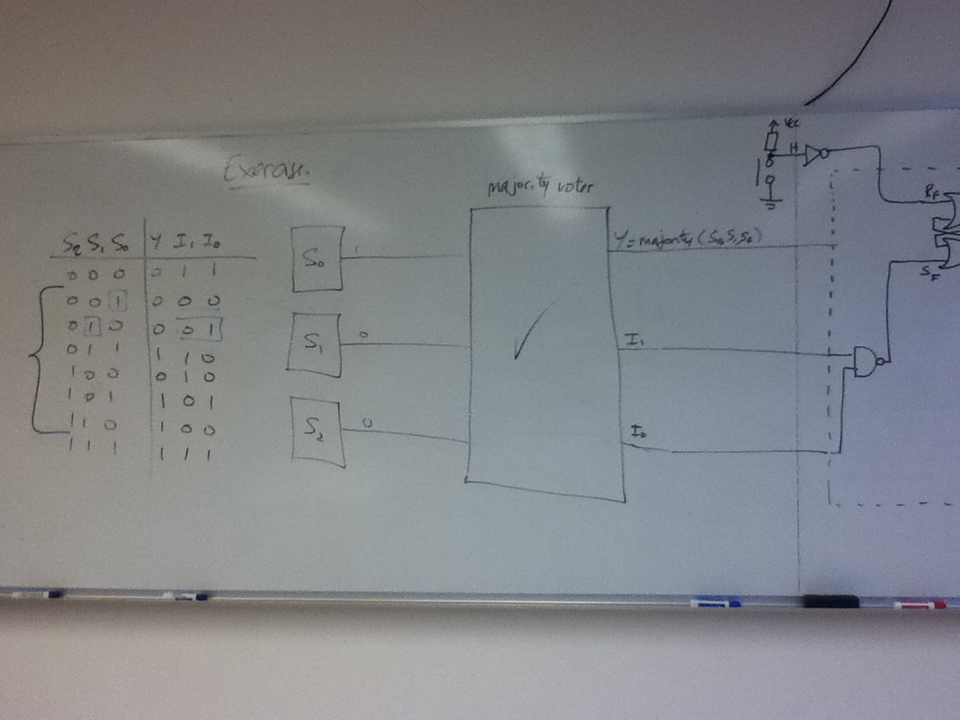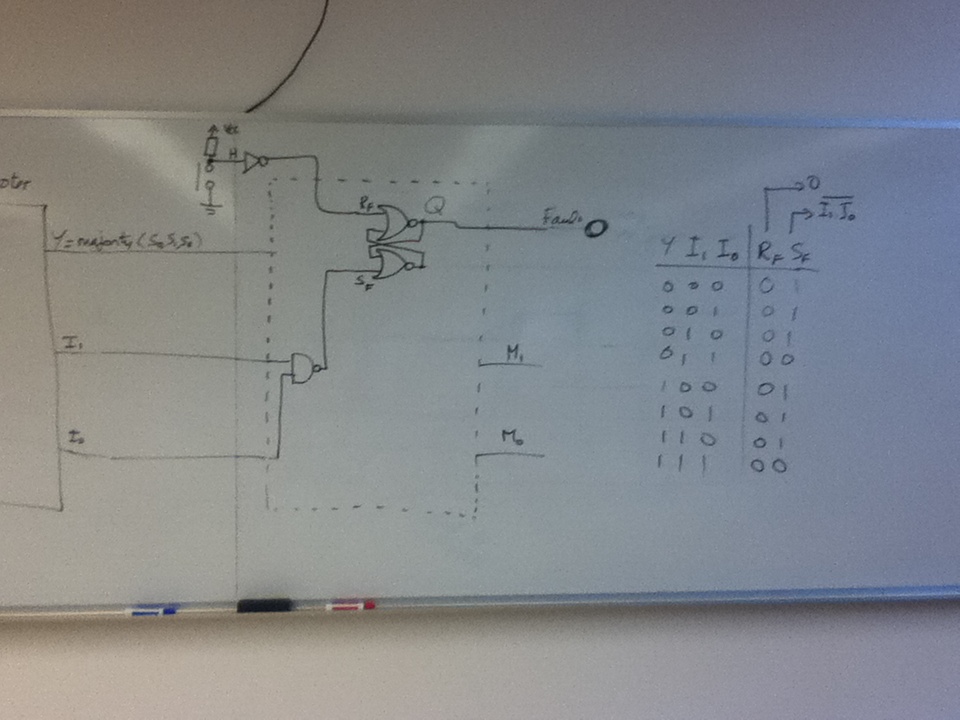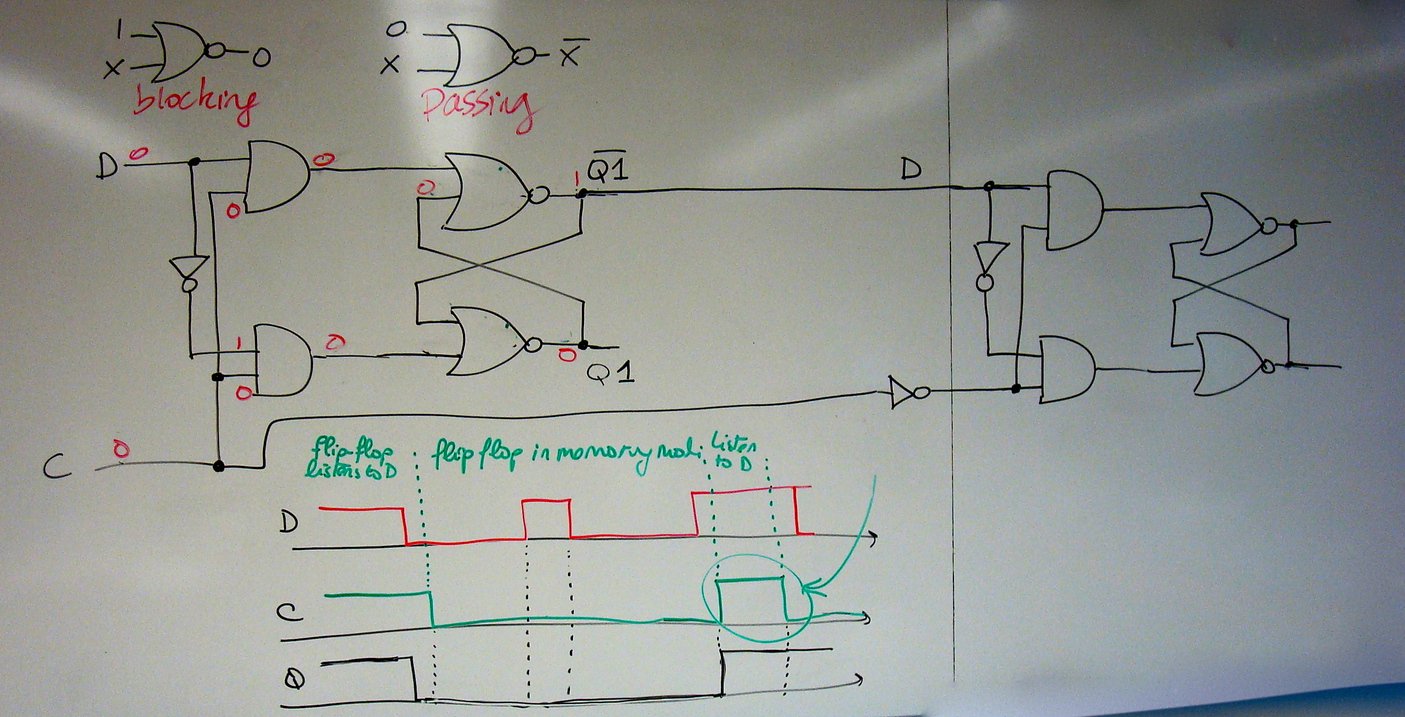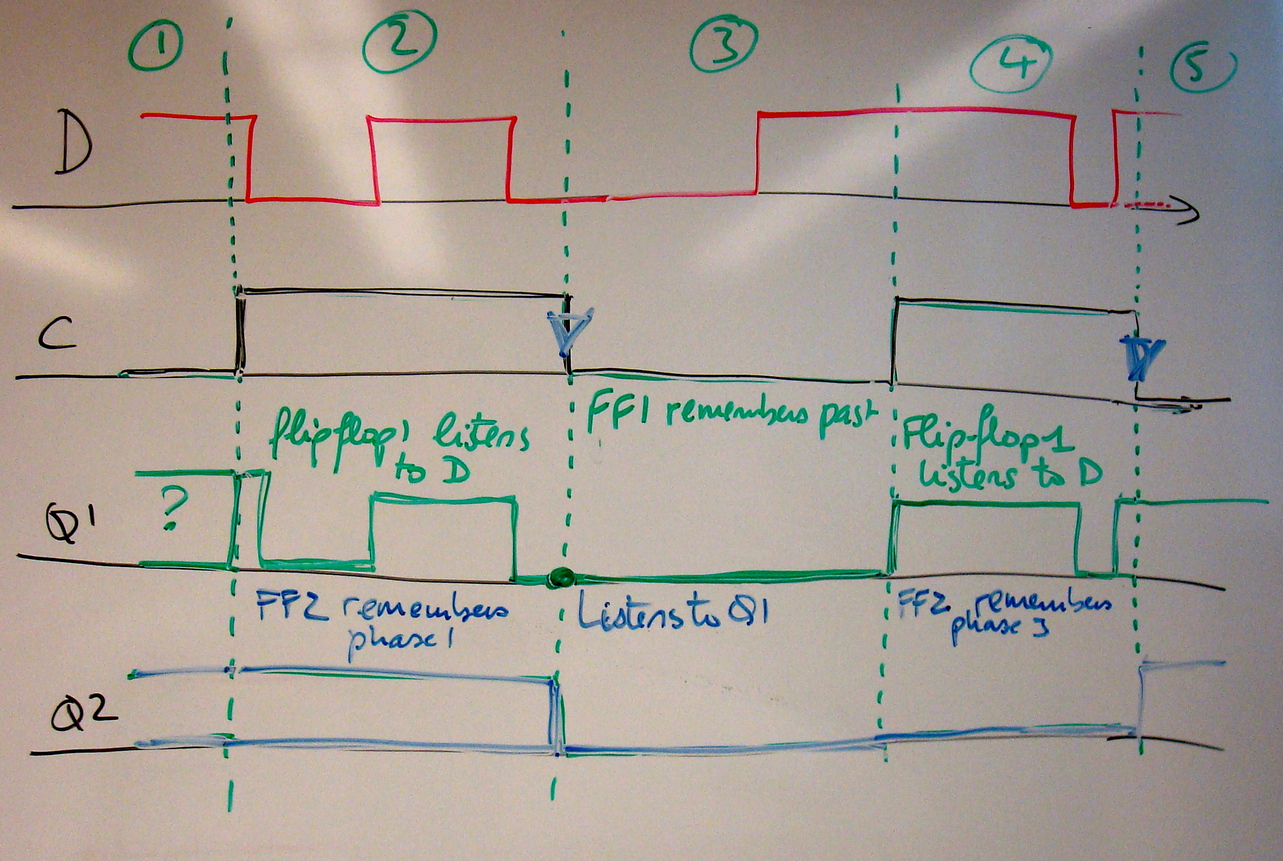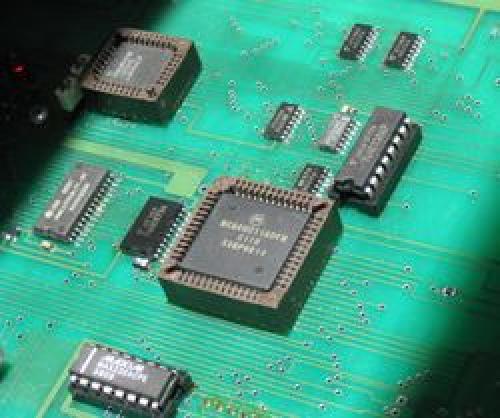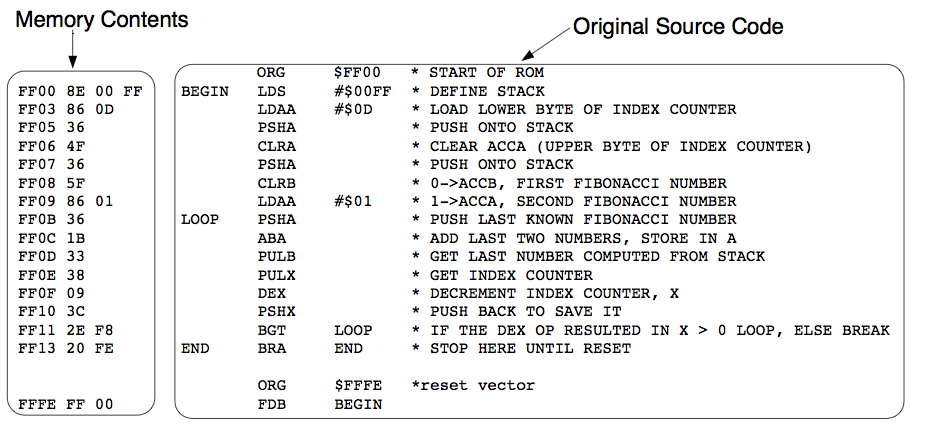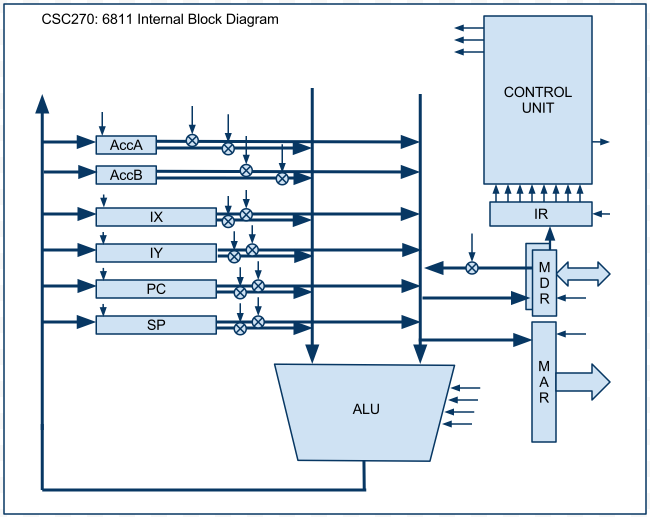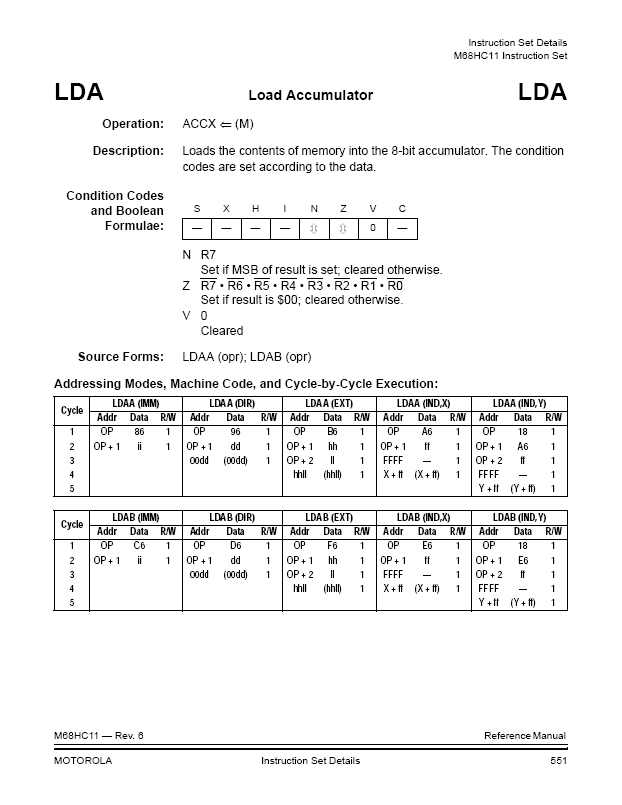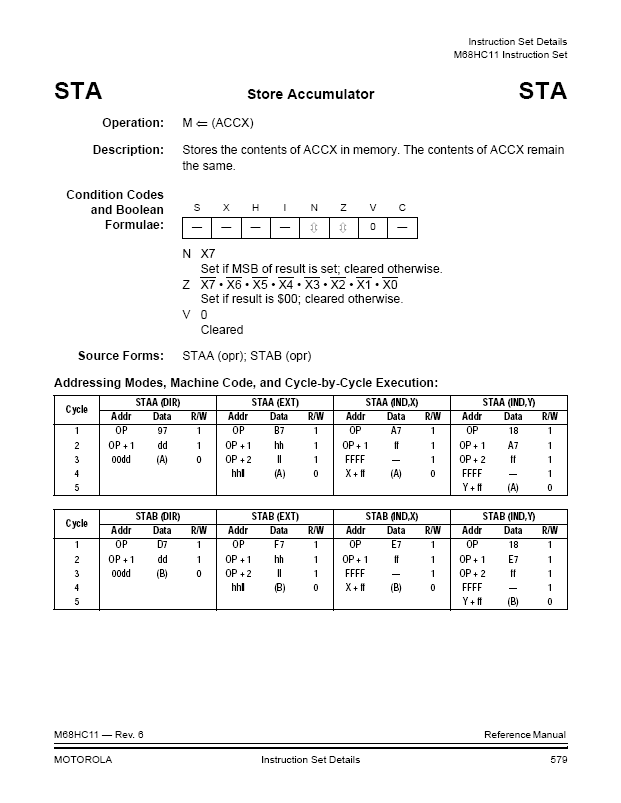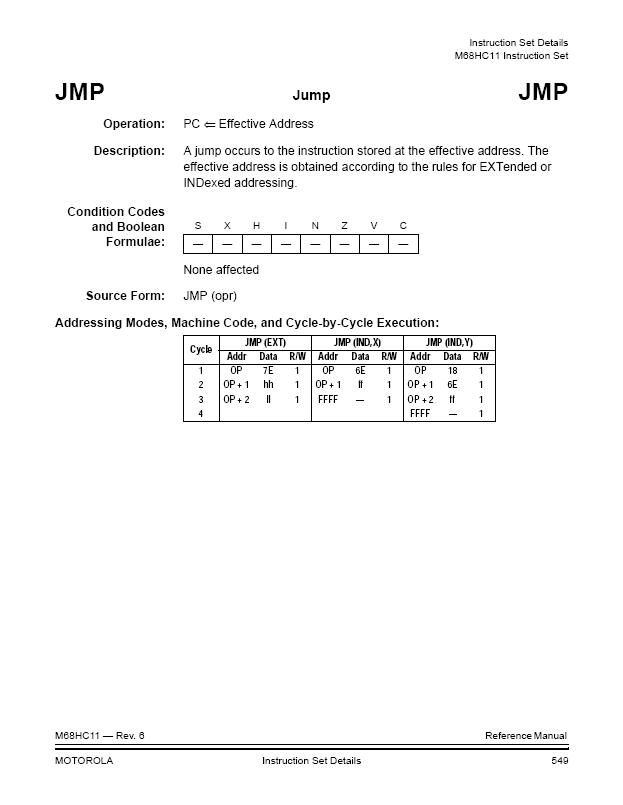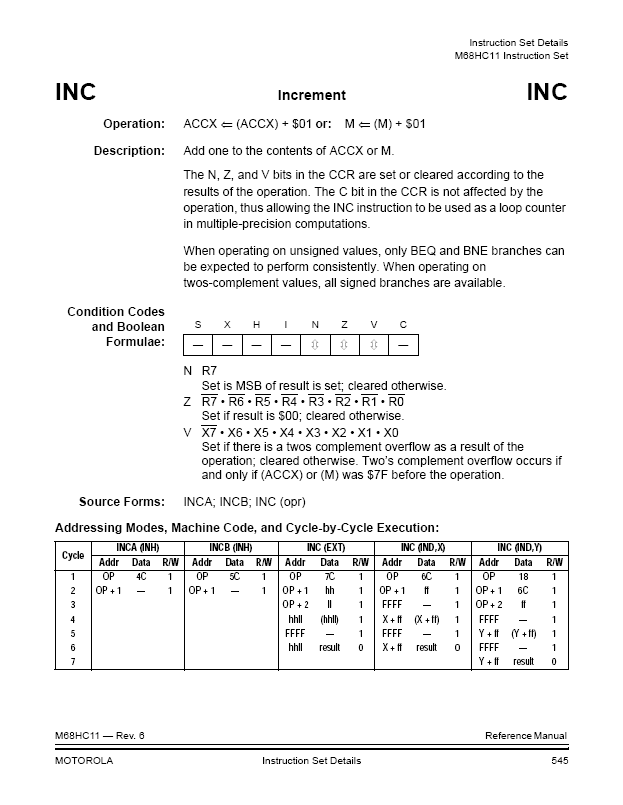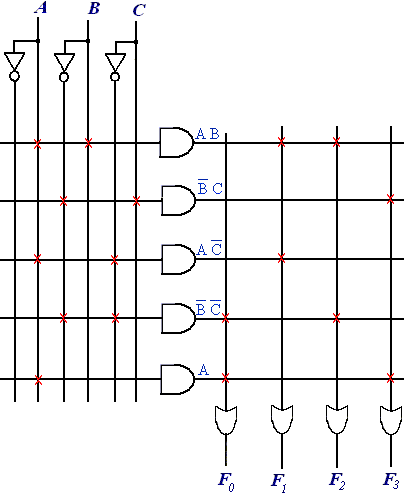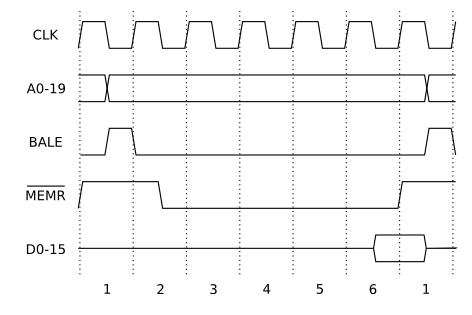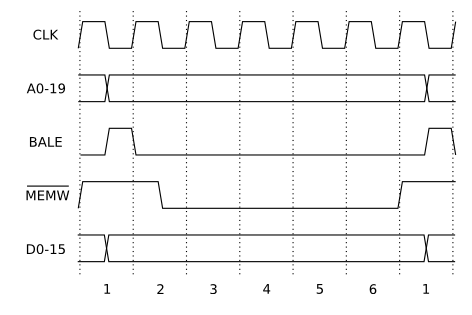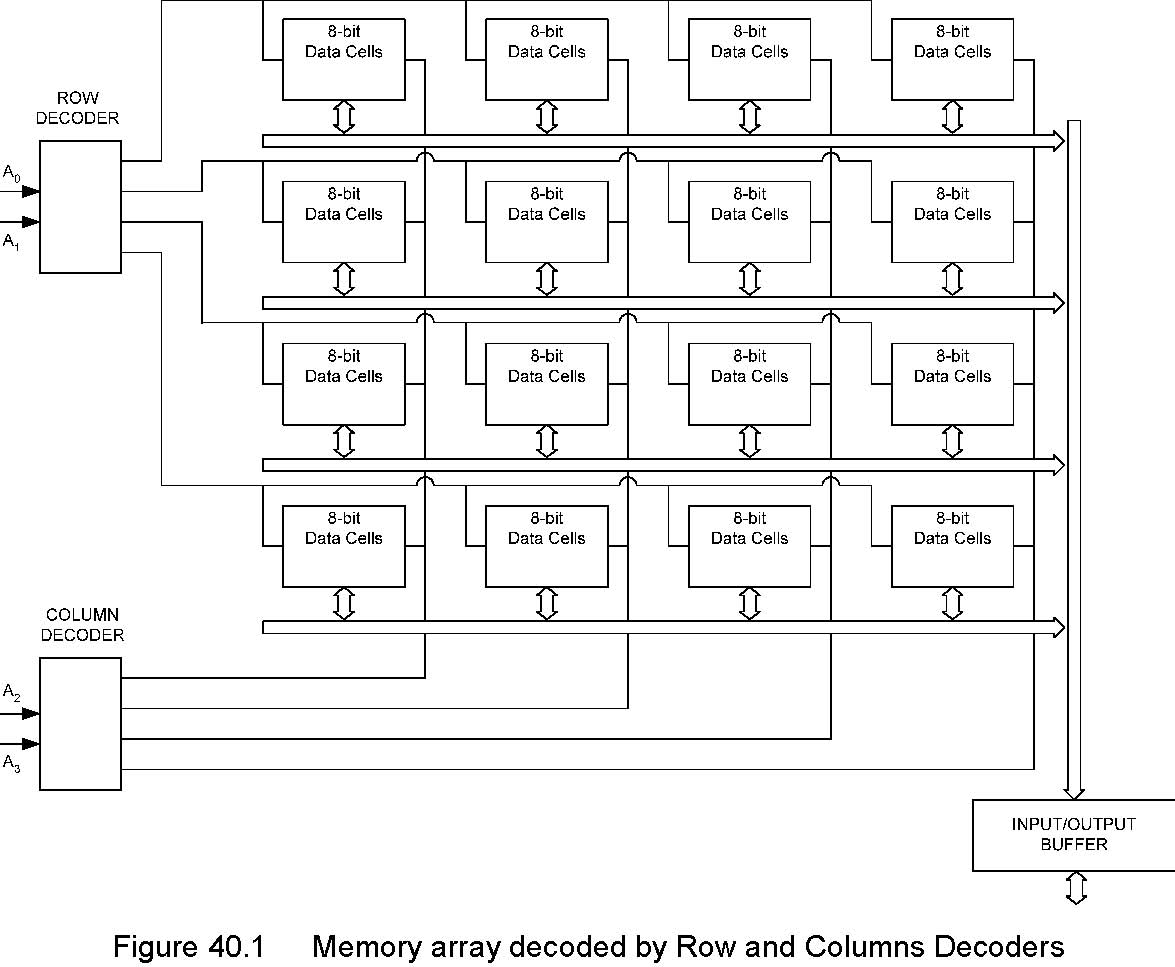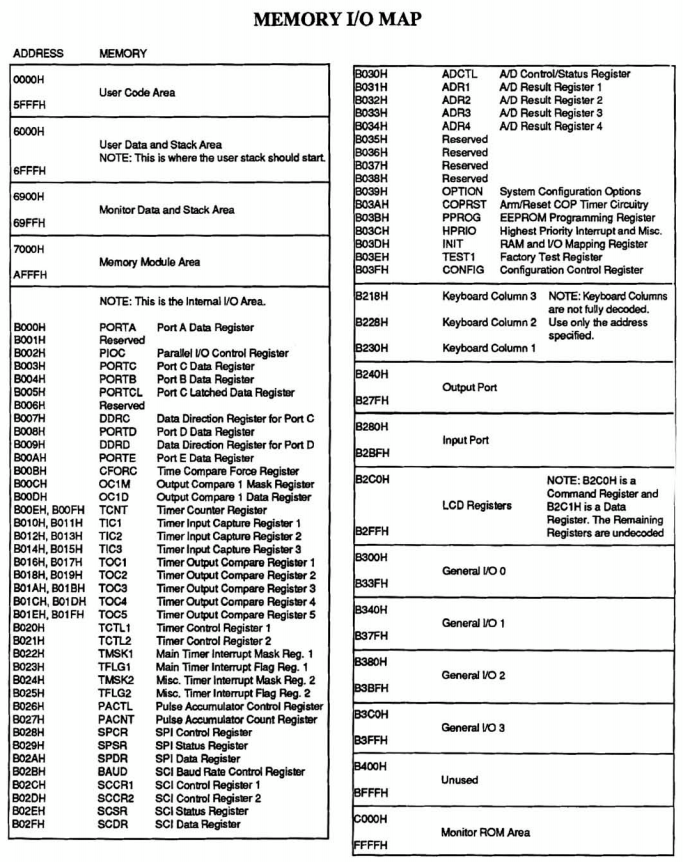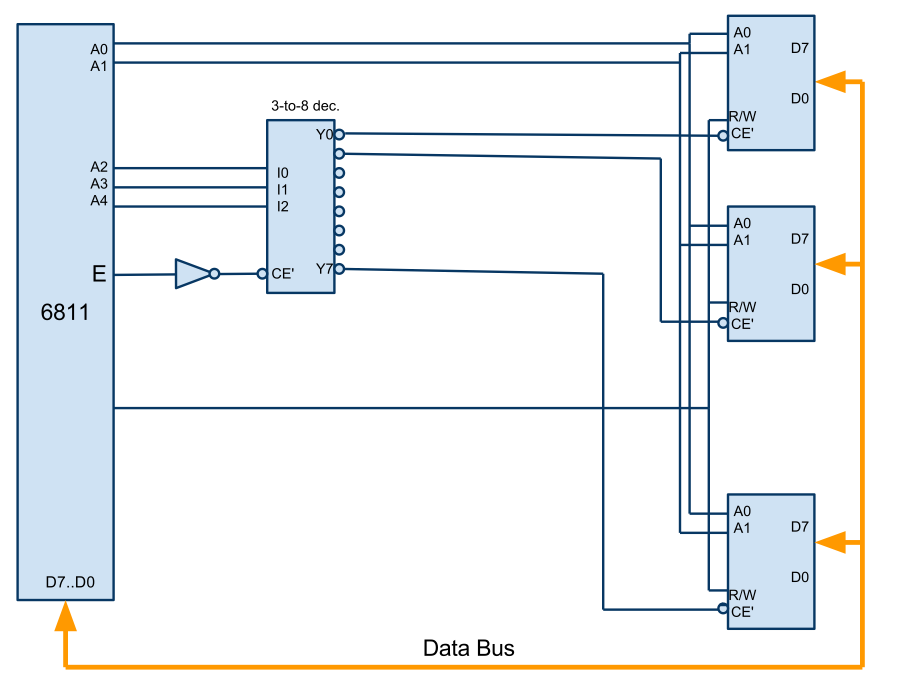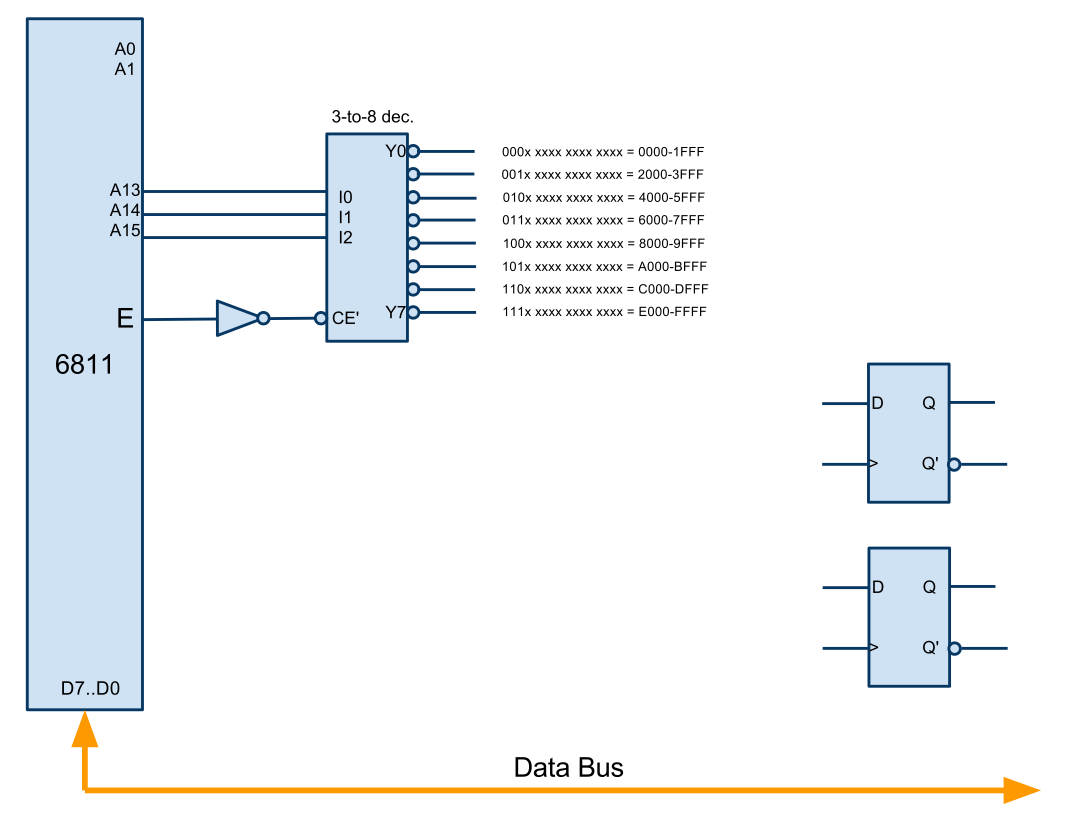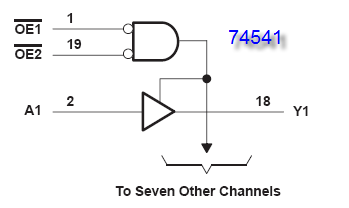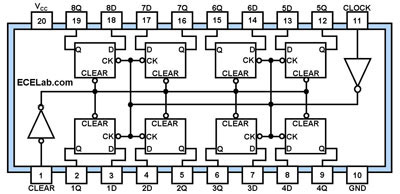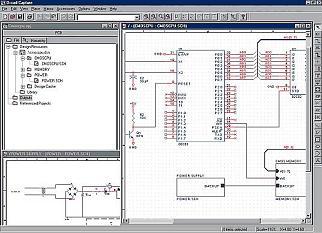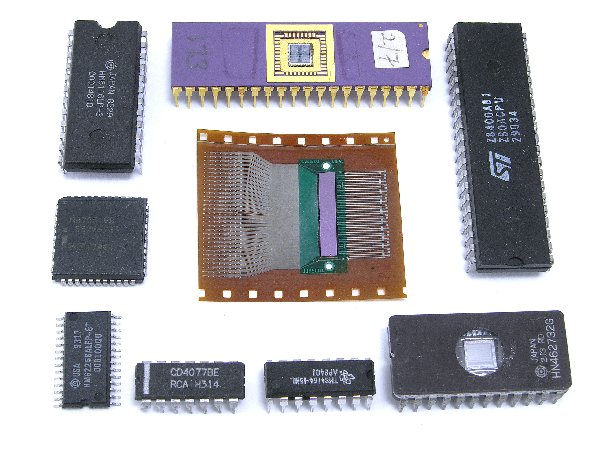Line 441:
Line 441: ** [[CSC270 lab 12 2011 | Lab #12]]
** [[CSC270 lab 12 2011 | Lab #12]]
* '''Wednesday'''
* '''Wednesday'''
+ ** Continuation of [[CSC270 lab 12 2011 | Lab #12]]
* '''Friday'''
* '''Friday'''
** [[CSC270 Introduction to the Arduino | Introduction to the Arduino]]
** [[CSC270 Introduction to the Arduino | Introduction to the Arduino]]
Revision as of 10:12, 21 April 2011
--D. Thiebaut 08:44, 7 January 2011 (EST)
Back to Main Page for CSC270
Prof
Dominique Thiébaut email
Weekly Schedule First 1/2 of Semester
Week Topics
Reading
Week 1
Monday : Introduction to the semester
Lecture
Syllabus
Overview of the class
combinational logic (1/4)
sequential logic( 1/4)
microprocessor logic (1/2)
Boolean Algebra
Truth tables
Boolean functions
canonical forms: the minterm canonical form
examples of schematics from Nasa
logic gates
and gate (7408)
or gate (7432)
not gate (7404)
Lab 1
Wednesday : Some basic electricity concepts
Voltages, diagrams, Vcc, Gnd
Measuring voltages: different of potential ==> need two measuring points
Resistors
limit current
passive
property = resistance
unit of resistance = Ohm (Ω)
Ohm's Lay: V = RI
Apply law to simple circuits
Series and Parallel circuits with resistors
Exercises
How to generate a simple switch that generats ON/OFF, High/Low, 1/0
The transistor
Emetter, Base, Collector
basic operations
simple circuit Friday
Example of gates with transistors
Back to boolean functions
Exercise
review of what is a minterm.
Simplifying boolean functions
Maxterms
Binary numbers
Boolean algebra and Logic Gates
Basic theorems
Truth tables
Boolean functions
Canonical forms
Week 2
lecture
What is a switch? i.e. how does a switch from the HeathKit generate a high or low voltage?
We are programmers! Verifying circuits with simple programs !
The binary adder. 2-bit, and 3-bit versions
the NAND and NOR gates: universal gates
lab
Wednesday
Friday : No Class
Week 3
Monday
Wednesday
Lecture
Don't Care conditions in Karnaugh Maps
Decoders
Continuation of Lab #3
Friday : No Class
Karnaugh maps are covered in Chapter 3.
Decoders are covered in Chapter 4.
Week 4
Monday
lecture
another way to draw NANDs and NORs...
relationship between if ( a==b ) { ... }
active-low/active-high signals and circuits
decoders with active-low outputs: most common!
Exercise : Implement f = Σ(1,3,4,5) with a decoder with active-high outputs
Exercise : Implement f = Σ(1,3,4,5) with a decoder with active-low outputs
decoders with an enable input
cascading decoders
designing a 3-to-8 decoder with the 4-to-10 7442 decoder
Lab #4
Wednesday
The Multiplexer circuit
The RS flipflop
Friday
Week 5
lecture
the RS Flipflop
Timing Diagrams
Exercise : Design a majority voter that remembers when a fault occurs. First design a simple one that keeps track of the fact that a fault occurred in the past. Add a reset button to reset the fault signal. Then modify your design so that the majority voter not only remembers that there was a fault, it also remembers the Id of the faulty device. The oscilloscope
Sampling
Periodic signals
Frequence
Peak-to-peak voltages
Trigger: Rule = always trigger on the slower of two signals! Lab #5 Wednesday : Rally Day
Friday The RS Flip-flop: review
Making it work with a clock signal
Ideally we need a pulse to latch information in the flip-flop
Latching on the Low-to-High transition of the clock
the D Flip-flop: two RS flip-flops working in ping-pong mode
The 74LS74 circuit.
Timing diagram of a D Flip-flop
Mini Lab 1
The D-Flip-flop is covered in Section 5.3 of Mano.
Week 6
Monday
lecture
Low-to-high and High-to-low clock inputs
A first 2-state state-machine with a D-Flip-flop
Duty cycle of a signal = %age of time ON / Period
The Moore Model, or Moore Machine
How do we find a way to generate this machine?
Characteristic Table of the D-Flip-flop
State diagram
State table
Activation table
Lab
Wednesday
Friday
Read Chapter 5
The chapter introduces several flip-flops. We'll look at the JK briefly in class. The chapter also introduces two different approaches to designing finite state machines: the Moore machine and the Mealy machine. We're concentrating here on the Moore machine, for which the output is a function of the present state only. This is the simplest and more widely used model.
Week 7
Monday
Note: The lab report from last Monday (2/28) is due on Wednesday, 3/9/11 to allow extra time to prepare for the midterm.
Midterm Exam
Midterm preparation
Lab #7
2-hour Assembly Crash-Course , Monday 6:00 p.m. - 7:30 p.m., FH 342. RSV if you are coming so that enough pizza can be purchased for dinner.
Wednesday
Sequencers with external inputs
Exercise
Finish Lab #7
Friday
Sequencers with active inputs
Week 8
Second 1/2 of Semester
Week Topics
Reading
Week 9
The 6811 Processor: references
The official Motorola 68HC11A8 Data Sheet . Fairly cryptic...
A Motorola 6811 Manual . It is a nicely written refresher on many concepts of assembly language applied to the 6811.
Check Section 3.2 on addressing modes (inherent, direct, extended, indexed, relative).
Get a refresher for the different instruction types (arithmetic, shifts, control, etc) in Section 3.4.
The condition code register is covered in Section 3.5. Skip Section 4.
M68HC11 Technical Reference , from Motorola.
Section 6.5 shows the instructions in logical groups.
M68HC11 Pocket Reference .
Very useful, on Page 15, a list of all the opcodes supported by the 6811, in numerical (hex) order.
68HC11A8 Technical Reference : a hardware & engineering description. of the 6811, its ports, and how it operates.
See Section 10 for a cycle-by-cycle description of the execution of each instruction.
See Appendix A, Figure A-14 for the timing diagram of a typical (multiplexed expansion) memory access.
6811 Instruction Set , with hexadecimal opcodes. A reverse map, from hex to instructions can be found here.
2-Page List of all the 6811 Instructions
Software for the 6811
Heathkit ETW3800 Trainer manual (pdf) Concentration on Assembly Language
Example of fully assembled 6800 program
Listing format
opcodes, mnemonics, directives, columnar format
The instructions
Addressing Modes: inherent, immediate, direct, extended, indexed, relative Wednesday
A look at the internal circuits of the 6811.
Week 10
Monday
lecture
Quiz
Cycle-by-cycle description of an endless loop of 3 instructions: 0000 4C LOOP: INCA
0001 97 10 STAA x
0003 20 FB BRA LOOP
Wednesday : MEMORY-MAPPED I/O
Friday
Happy Birthday Edo! (all the pics on Facebook )
Week 11
Monday
Wednesday
Designing a 2-bit I/O port : 2 solutions
Parallel-write design (the 2 bits have the same address)
Separate-address design (the 2 bits have different addresses)
Continue with Lab 10
Friday
Week 12
Happy Birthday Millie! (all pictures on Facebook .)
Monday
lecture
Lab 11
Designing and wiring up an input port with the 6811 How to figure out how many different addresses energize Y4?
Examples of I/O Ports
Parallel Port
Data Registers
Control Registers
Status Registers
Handshake Protocol
Software Driver Friday : No class: Programming Contest!
Week 13
Monday (in FH345: lab shared with Susan Voss's class)
Wednesday
Friday
Week 14
Please watch on your own the very good Arduino video.
Back To Main Page
Links and Resources Printing How to print a text file (pure ASCII, not an MS Word document) from a beowulf account to the printer @ FH354: cprint -15 myFile.txt
How to print a pdf from a beowulf account to the printer @ FH354: lpr -P ford354 max232.pdf
How to print an image to the same printer, from a beowulf account: convert myImage.jpg myImage.pdf
lpr -P ford354 myImage.pdf
Programs Software PSpice 9 Pspice 9, Student version. An nice alternative to drawing schematics by hand.
This is a Windows version. (I have tried to make it work under wine/Mac OS X but haven't been able to make it load the libraries correctly)
Make sure you select the schematics option when installing the software.
Select Tools/Schematics when starting the editor
The schematics editor is located in C:\Program Files\OrCAD_Demo\PSpice\PDesign.exe upon installation.
Download here !
PSpice Tutorial Integrated Circuit Data-Sheets Java Applets demonstrating most logical gates
Texas Instruments and Harris Semiconductors' Data Sheet Search Engine
Fairchild Semiconductors' Data Sheet Search Engine
74LS00 , 74LS01 , 74LS02 , 74LS03 , 74LS04 , 74LS05 , 74LS08 , 74LS09 , 74LS10 , 74LS12 , 74LS13 , 74LS15 , 74LS20 , 74LS21 , 74LS22 , 74LS26 , 74LS27 , 74LS28 , 74LS30 , 74LS32 , 74LS33 , 74LS37 , 74LS38 , 74LS40 , 74LS42 , 74LS47 , 74LS48 , 74LS51 , 74LS54 , 74LS55 , 74LS74 , 74LS75 , 74LS76 , 74LS83 , 74LS85 , 74LS86 , 74LS90 , 74LS95 , 74LS138 , 74HCT240 , 74LS243 , 74HCT244 , 74LS259 , 74HCT541 Motorola 68HC11 Documentation Good source of info on the 6811.
6811 FAQs .
The official Motorola | 68HC11A8 Data Sheet . Fairly cryptic...
A Motorola 6811 Manual . It is a nicely written refresher on many concepts of assembly language applied to the 6811.
Check Section 3.2 on addressing modes (inherent, direct, extended, indexed, relative).
Get a refresher for the different instruction types (arithmetic, shifts, control, etc) in Section 3.4.
The condition code register is covered in Section 3.5.
M68HC11 Technical Reference, Motorola
Section 6.5 shows the instructions in logical groups.
M68HC11 Pocket Reference .
Very useful, on Page 15, a list of all the opcodes supported by the 6811, in numerical (hex) order.
68HC11A8 Technical Reference : a hardware and engineering description. of the 6811, its ports, and how it operates.
See Section 10 for a cycle-by-cycle description of the execution of each instruction.
See Appendix A, Figure A-14 for the timing diagram of a typical (multiplexed expansion) memory access.
Heathkit ETW3800 Trainer manual (pdf)
Input/Output with the 6811: Memory-Mapped I/O (Heathkit documentation)
Back To Main Page

